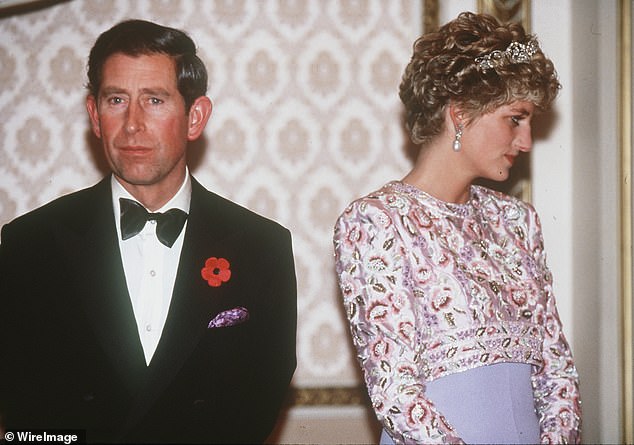Once upon a time, the world watched what seemed like the perfect love story unfold.
In July 1981, millions of hearts melted as Prince Charles and Lady Diana Spencer exchanged vows in a breathtaking ceremony at St. Paul’s Cathedral.
It was the kind of royal wedding that looked straight out of a fairytale — 750 million people across 74 countries tuned in, captivated by the promise of a new royal chapter.
But behind the glamour and the global excitement, trouble was quietly brewing.
Eleven years later, that same couple — once hailed as the future of the monarchy — was struggling to hold their marriage together.
The So-Called “Togetherness Tour”
By 1992, whispers of separation had grown too loud to ignore.
In an attempt to silence the rumours, Charles and Diana embarked on a four-day tour of South Korea, optimistically branded the “Togetherness Tour.”
It was meant to show unity, to remind the world that the Prince and Princess of Wales were still the royal dream team.
Instead, the cameras captured something very different — a couple who could barely stand to be in the same frame.
The British press, ever quick with a nickname, began calling them “The Glums.”
Behind the scenes, royal biographer Andrew Morton later revealed that Diana was “in no mood to continue the hollow charade.”
The couple’s relationship had hit breaking point, and she was determined not to pretend anymore.
A Painful Echo of the Taj Mahal
For many royal watchers, the tension in Seoul was a haunting repeat of an earlier moment that same year — Diana’s lonely photograph outside the Taj Mahal.
She sat alone, a symbol of isolation, while Charles attended business meetings elsewhere.
That single image spoke volumes: the fairytale princess felt unloved and forgotten.
Morton wrote that in South Korea, Diana once again used her expressions and body language to quietly tell the truth.
“She wanted the world to see what was really happening,” he said.
Reluctance and Royal Pressure
At one point, Diana didn’t even want to go to South Korea. Jonathan Dimbleby’s biography of Charles reveals that the Princess told aides she was “not prepared to go.”
With Andrew Morton’s explosive book Diana: Her True Story recently published, she was emotionally exhausted.
The situation became so dire that even Queen Elizabeth II had to step in.
After a tense discussion — described by Morton as a “showdown” — Diana reluctantly agreed to attend, reportedly saying she’d go only because “the Queen asked.”
The Public Unraveling
From the moment the royal couple stepped off the plane in Seoul, the strain was obvious.
Former royal press secretary Dickie Arbiter, who was part of the entourage, later recalled the moment vividly: “As the aircraft door opened, I turned to the protection officer and said, ‘We’ve lost this one.’”
Their body language was cold and distant. “Her expression was pinched and pale,” Arbiter remembered.
“His was rigid and morose. It was as if they could have killed each other with a single glance.”
A Loveless Performance
The rest of the trip offered little comfort. During an official banquet hosted by South Korea’s President Roh Tae-woo, Diana, dressed elegantly in a Catherine Walker gown and her family tiara, tried to smile through the pain.
But photographers caught the truth — red-rimmed eyes, patchy makeup, and a look of pure despair.
“She’d clearly been crying,” photographer Jayne Fincher later recalled. “My heart went out to her.”
Dimbleby described the tour as a “dreadful experience,” one that confirmed what the world already suspected — the royal marriage was beyond saving.
The Beginning of the End
By the end of the trip, Diana was reportedly in tears, nauseous, and emotionally shattered.
One of her aides said it was clear “she could no longer endure her marriage and wanted to break free.”
Charles, too, privately admitted his despair. In a letter to a friend, he confessed: “The strain is immense… I don’t know what will happen from now on, but I dread it.”
Only a month later, on November 2, 1992, Prime Minister John Major stood before Parliament to announce what the world had been expecting — Charles and Diana were officially separating.
The Fall of the Royal Illusion
The announcement marked the end of an era.
The perfect royal family image — the one millions had believed in since that glittering wedding day — shattered before the world’s eyes.
Just weeks later, a devastating fire tore through Windsor Castle, leading Queen Elizabeth II to famously describe 1992 as her “annus horribilis.”
In a reflective speech marking her 40th year on the throne, the Queen admitted, “1992 is not a year on which I shall look back with undiluted pleasure.”
A Legacy of Heartbreak and Humanity
The so-called “Togetherness Tour” turned out to be the moment that sealed the royal couple’s fate.
What was meant to reassure the public instead exposed the painful truth — that behind the crowns and the ceremony were two people, exhausted and unhappy.
For Diana, it marked the beginning of her path to independence. For Charles, it was a time of reckoning.
And for the world, it was the end of a fairytale that had once promised so much love — and delivered so much sorrow.
Share on Facebook «||» Share on Twitter «||» Share on Reddit «||» Share on LinkedIn
